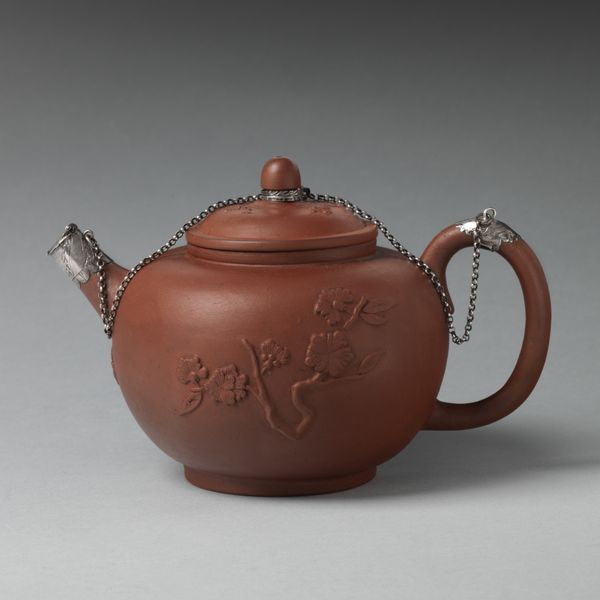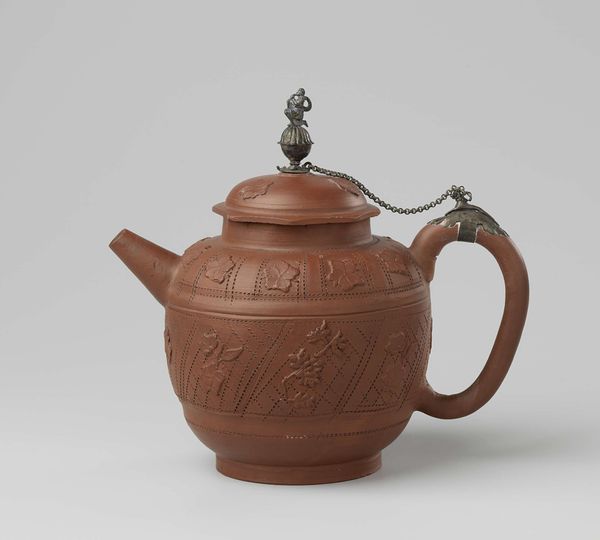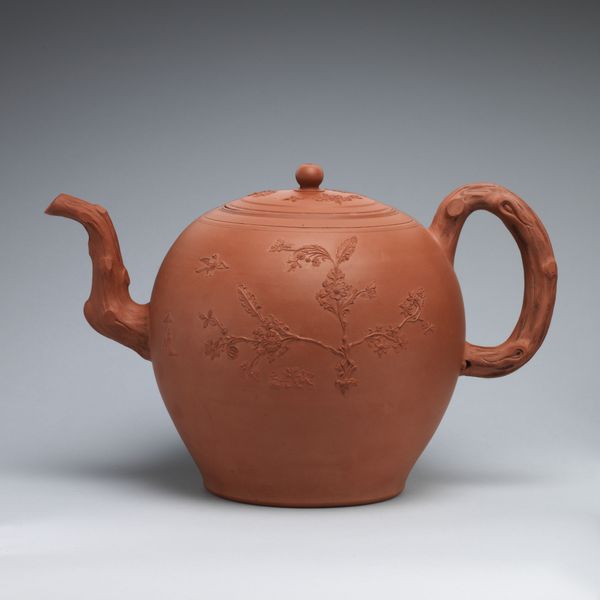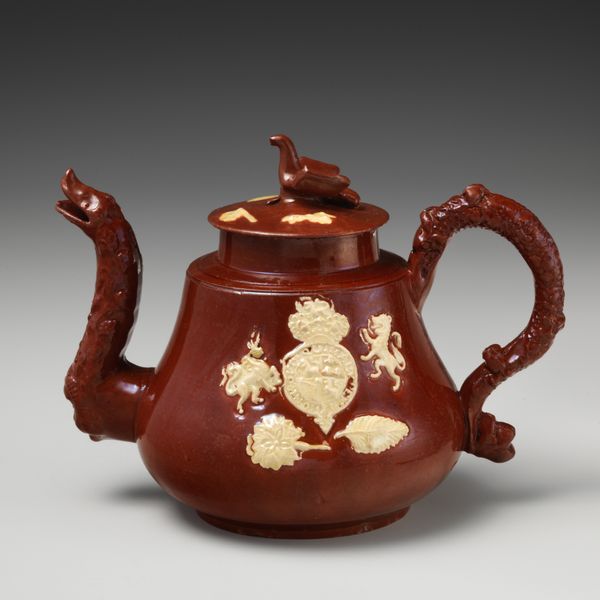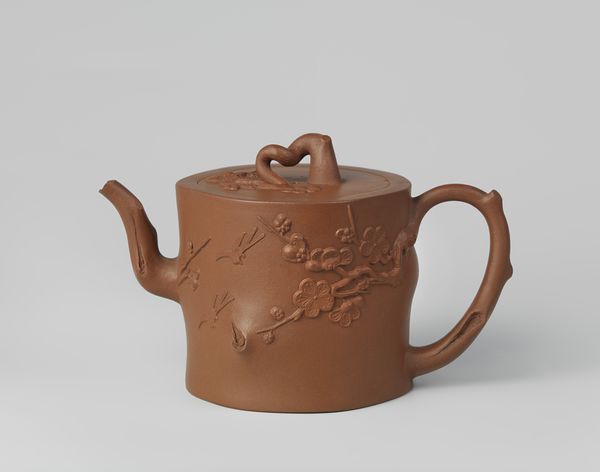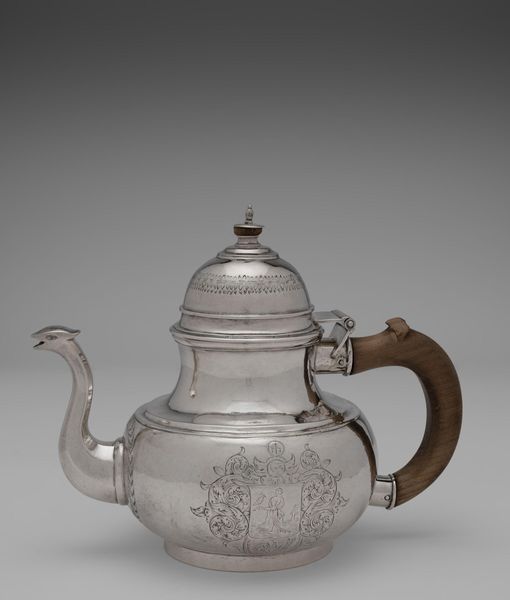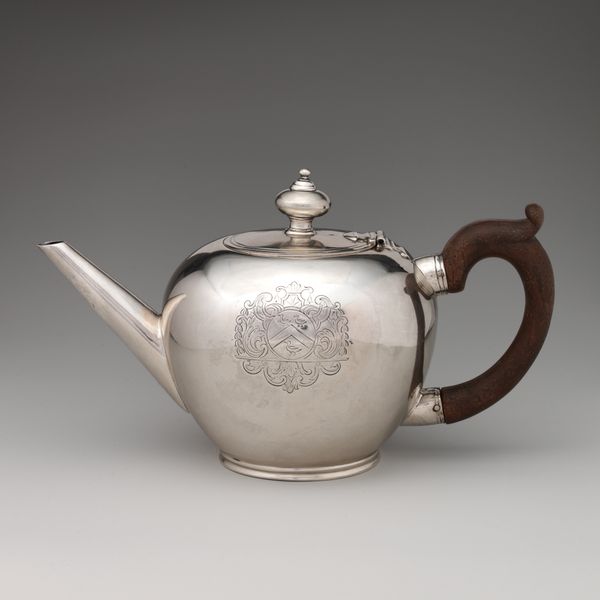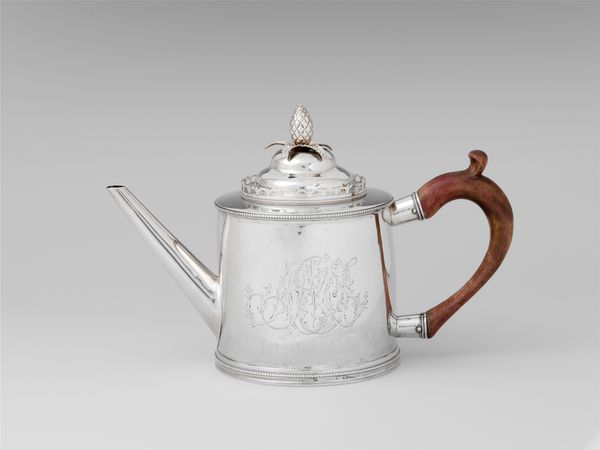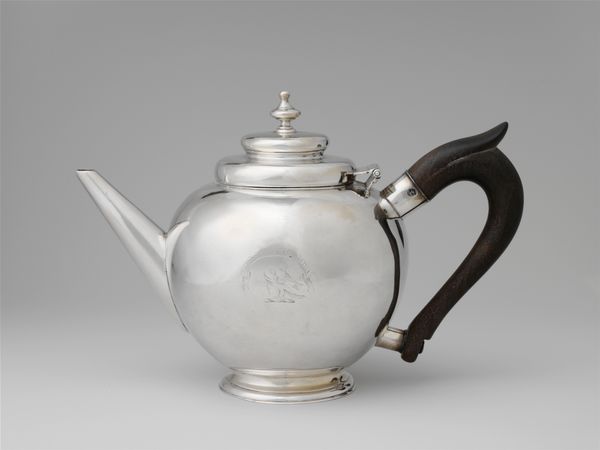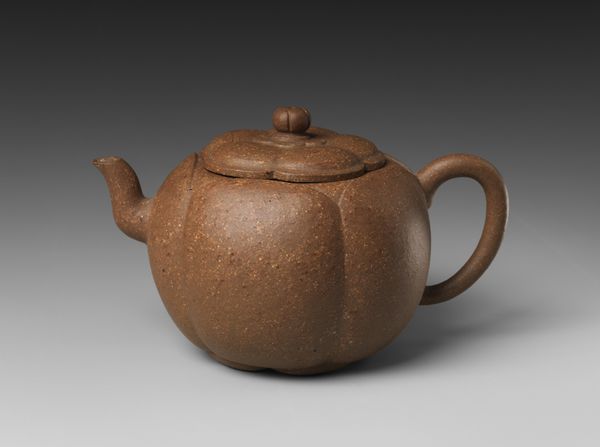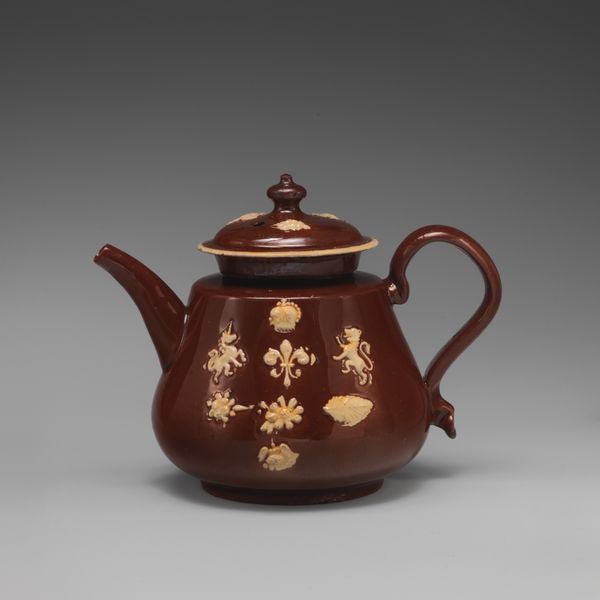
ceramic
#
baroque
#
ceramic
#
stoneware
#
decorative-art
Dimensions: height 11.5 cm, height 8.5 cm, width 16.5 cm, diameter 10 cm, diameter 6.3 cm
Copyright: Rijks Museum: Open Domain
Curator: I'm immediately struck by how grounded it feels. The earthy color, the simple form… it whispers of quiet mornings and solitary rituals. It's modest, but elegant at the same time. Editor: Indeed. What you are seeing here is a teapot, dating back to around 1700. Its creation is attributed to the skilled hands of Arij de Milde. Made with ceramic and stoneware elements, the baroque stylings place the teaware in a larger conversation around the decorative arts tradition and what materials communicated socially at that time. Curator: Ceramic! That’s part of its charm, I think. There’s such an honesty to it, the way the fingerprints of the maker can be so present. You imagine the clay being shaped and fired and then finding its way into someone’s home… It has an intimate, everyday magic to it. Editor: The techniques of its production definitely echo the period, when ceramic was gaining broader acceptance due to advances in kiln technology and glaze composition. With increasing availability of resources, teaware became increasingly important in commercial and social trading routes in the Netherlands and abroad. The presence of decorative floral imprints speaks to consumer appetite and interest in the luxury object as well. Curator: Look at the floral decorations—they’re so subtle. I wonder if they have some symbolic meaning. What do you suppose a bloom represents? Editor: Hard to say for certain, of course, without direct documentation. It is reasonable to infer that depending on its destined consumer market or trade partners, it may reference localized narratives surrounding botanical elements or more abstracted ideals concerning status, the passage of time, nature, etc. Curator: Thinking of the materials, the Baroque flourishes—it suggests this teapot likely sat in rooms where other ornate items signaled both wealth and knowledge. Not too bad for something as simple as having tea! Editor: Absolutely. Examining these objects really exposes broader histories of production and the evolving ways our consumption ties us together. Curator: Well, looking at it has made me want to brew a pot right now. Maybe that’s the point of all decorative art after all. To give some beauty to everyday acts.
Comments
No comments
Be the first to comment and join the conversation on the ultimate creative platform.
